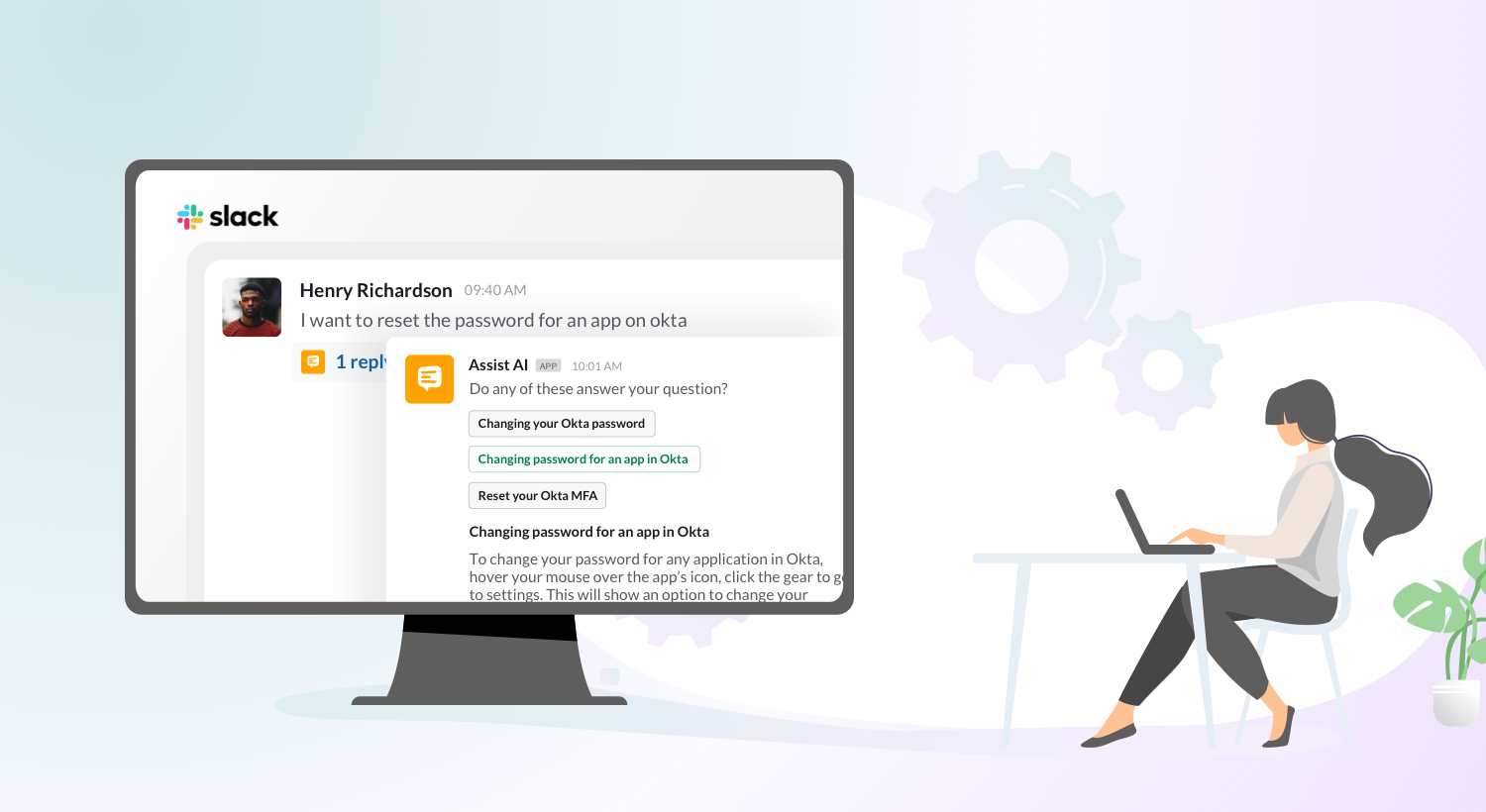Self-service enables organizations to scale service and empower employees to handle their IT issues better. Service desk managers should set goals to check process alignment and eliminate roadblocks. Here are 6 steps to measure the effectiveness and success rates of self-service in your organization.
Steps to Measure Self-service Success
1. Set Goals for Your Service Desk
Self-service goals don’t mean the percentage of ticket deflection or the total number of page views. Goals represent the overarching value you want out of self-service. Aligned with the organization’s growth roadmap, goals depend on individual vision and industry benchmarks.
- Improve Employee Experience: Employees’ experience affects all aspects of your business. They carry your vision to fruition. Self-service allows employees to self-serve themselves and overcome their issues quickly without relying on outside help.
- Promote Agent Performance: Self-service reduces ticket inflow by actively deflecting common queries and FAQs. This frees up the time and mind space of live agents for more difficult issues. With more control over their time, support teams can provide better attention to each ticket and provide quality resolutions. This improves agent CSAT and performance.
- Reduce Operational Costs: Self-help shifts the focus of both employees and service reps from tactical issues to strategic tasks. Easy internal processes mean reduced operational costs. Self-service options also save direct costs by helping you scale without increasing the staff count.
2. Identify Metrics to Measure Goals vs. Performance
How do you measure where you are with respect to your goals? With metrics. You should choose success metrics that matter to your organization. It differs from place to place.
Organizations new to self-service find user adoption to be their foremost metric. Large organizations may find reduced ticket inflow directly impacting their costs. Smaller ones may not see this; they might find resolution times or escalation rates more relevant. Smaller teams may not need chatbots either. They can do well with a self-service knowledge base. Ask yourself these questions before choosing your self-service metrics or KPIs.
- What do we want to achieve with self-service?
- How to measure self-service success?
- Will self-service really help our employees?
- How to make important decisions related to self-service?
- Will the chosen metrics help us realize our goals?
- How to promote easy user onboarding and adoption?
3. Gather Data to Drive Decisions
Once you are done with the hypothesis and planning, you need to move to data. Data-driven decisions are crucial to business growth. You should wait until you have enough users and data to retrieve meaningful information. Are your self-service tools making self-service easy or causing them extra work? Are your employees finding it difficult to switch apps just to raise a ticket? You can integrate solutions like HappyFox Assist AI with Slack or Microsoft Teams and enable employees to raise tickets within those platforms.
Decide what your help center needs with the data collected. When you offer more than one self-service channel, data becomes more crucial. You need a central warehouse to make sense of the data scattered across different support channels.
4. Use Reporting to Deduce the Retrieved Data
Unless processed, data means little on its own. HappyFox Business Intelligence provides cross-functional dashboards and reports to convert data into actionable insights. You don’t need to assume anymore. Self-service can be a greatly beneficial investment – if you have a solid understanding of how it performs and take improvement measures accordingly.

Here are a couple of instances where data can help you:
- To deflect common issues with automation and reduce the call volume
- To revamp your knowledge base content; to do more of what works and stop what doesn’t
5. Act on the Analysis Results and Make Continuous Improvements
Your analysis results will be the single source of truth you ever need for your business decisions. Take consistent actions on the results. Is the self-service content getting outdated? Revamp the content. Facing a lot of escalations? Expand the content to cover a wide range of topics. Along with inbuilt tools, collecting feedback can help you improve the user experience.
Successful IT self-service is a continuous process. Always look out for ways to improve. When your business evolves, so does your relationship with self-service. You can increase or reduce your focus on a particular self-service mode, redefine metrics based on the present scenario, and raise your stakes with self-service.
Conclusion
Getting on the self-service bandwagon is half the process. Only metrics help you go all the way in leveraging its potential. Measure the self-service success of your organization with these best practices.
Sign up for a HappyFox Assist AI demo to transform IT support and allow employees to manage support within Slack and Microsoft Teams.








